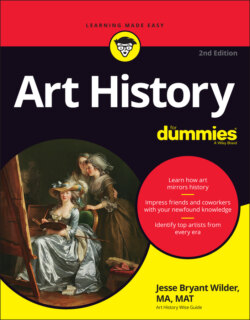Читать книгу Art History For Dummies - Jesse Bryant Wilder - Страница 90
Unraveling the Standard of Ur
ОглавлениеThe Standard of Ur depicts a Sumerian military victory fought in about 2600 BC. The artist tells the story of the battle and aftermath with inlaid images on three parallel strips on both sides of a wooden box. The front (shown in Figure 5-3) focuses on battle scenes, the back (shown in Figure 5-4) on the peaceful aftermath. The king is the big guy in the middle of the top band (on the war side), examining naked prisoners (one of whom is blindfolded) who file before him. The lower strips show the battle itself.
Kamira / Shutterstock
FIGURE 5-3: The Standard of Ur, measuring 8½ inches high by 19½ inches long, is a wooden box inlaid with shell, lapis lazuli, and red limestone. No one knows how it was used.
Apparently, the visual narrative strips in the Standard of Ur should be read from bottom to top, because the battle is in full swing in the bottom register, and the king collects prisoners in the top band. Notice how the artist overlaps the wild asses (known as onagers) pulling the chariots in the top and bottom bands of the war side. And notice how awkwardly he illustrates the dead men trampled by the animals in the bottom strip.
The peace side (refer to Figure 5-4) depicts what must be an after-the-battle gala. Reading again from the bottom up, men convey what may be battle booty to the feast. In the middle band, the food-and-gift parade continues. The top strip shows the banquet, people eating and drinking before the king while an entertainer plays a lyre.
Universal History Archive/UIG / Bridgeman Images
FIGURE 5-4: This is the peace side of the Standard of Ur.
Despite all the activity, the Standard of Ur is static, frozen in time. A thousand years later, in northern Mesopotamia, the Assyrians dramatically improved visual narrative, giving it an action-movie feel (see “Unlocking Assyrian Art,” later in this chapter).
